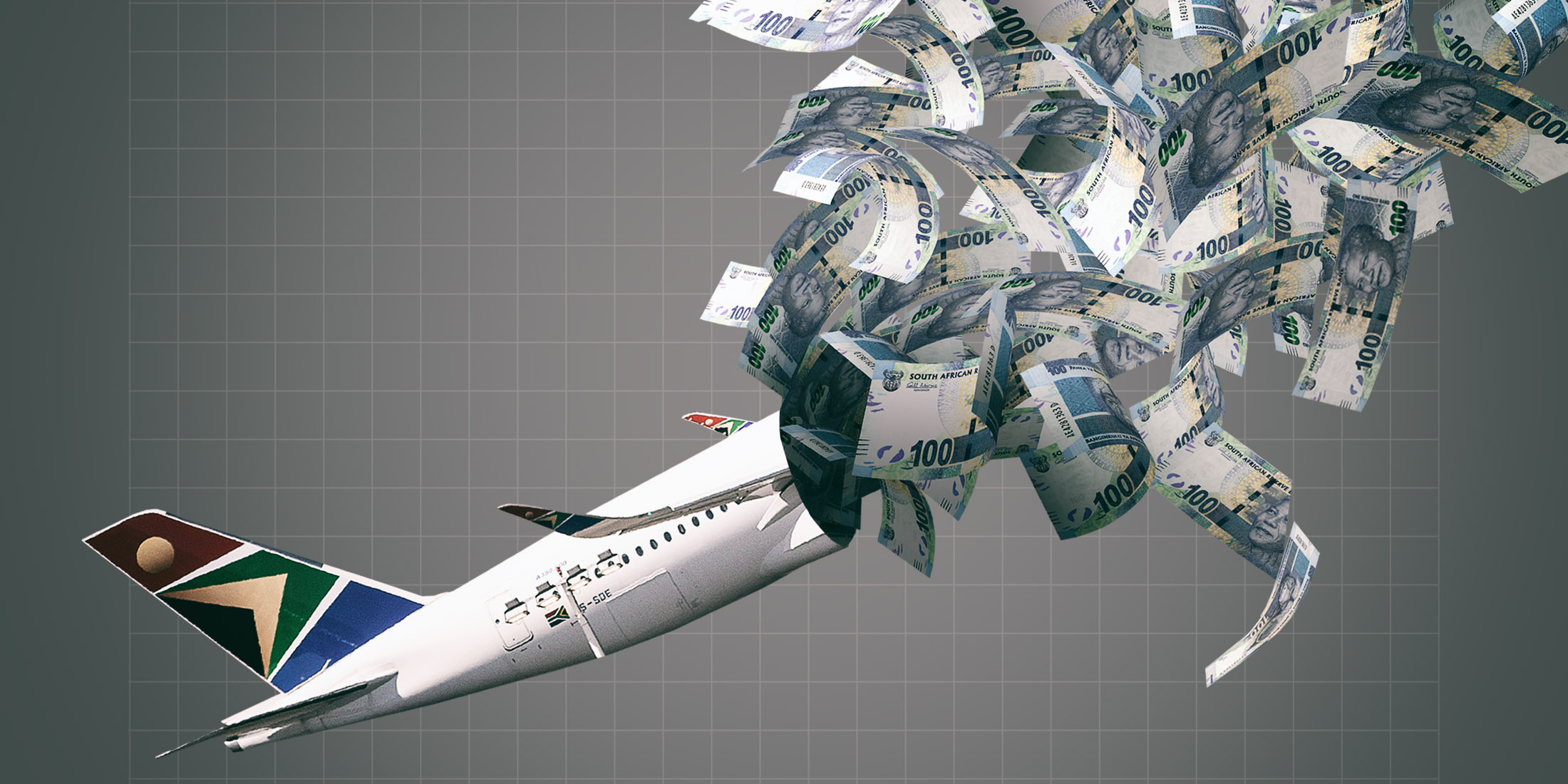SA’s aviation industry regulator says it is investigating an alleged take-off delay and safety incident involving an SAA flight that collected the second consignment of Johnson & Johnson Covid-19 vaccines from Brussels in late February.
Several aviation industry watchers informed Business Maverick that an SAA flight from SA to Brussels on 24 February 2021 “didn’t go well” as the airline’s crew allegedly miscalculated the take-off weight (TOW) of the aircraft (Airbus 340-600) that collected the Covid-19 vaccines.
The crew miscalculated by almost 90 tons, Business Maverick was informed. With an error like this, the take-off speeds are calculated as far too low (low TOW, low takeoff speeds). Fortunately, the Airbus is designed to correct these speeds, but not the speeds for flap retraction. Thus when the crew retracted the flaps the plane went into “alpha floor” event. This is where the airspeed is too low and the aircraft is in danger of stalling. A disaster was averted because once again the aircraft’s safety systems took over, adding power and lowering the nose slightly, preventing it from stalling.
“By the grace of God, it [the aircraft] limped into the air. When the crew started retracting the flaps it went into alpha-floor,” said the knowledgeable aviation source on condition of anonimity.
While the error did not result in a catastrophe, or even come close to one, in the aviation industry any such incident is automatically reported – by the plane systems to Rolls Royce (engine manufacturer) and Airbus (airframe manufacturer), which receive thousands of such messages on a daily basis.
In addition, the event must be automatically reported by the pilot and co-pilot to the airline (SAA, in this case), which must then inform the SA Civil Aviation Authority (Sacaa). It is Sacaa’s responsibility to conduct an investigation – even if the pilots deem the incident insignificant. It is part of the safety protocol.
According to Sacaa, aviation accidents “must be reported within 24 hours, serious incidents within 48 hours, and incidents within 72 hours”. But Sacaa confirmed that it was only informed about the SAA “alpha floor protection” incident on 17 March, three weeks after it occurred.
Contacted for comment, a Rolls Royce spokesperson suggested that Business Maverick contact SAA directly.
The alpha floor incident calls into question SAA’s competency to fly after its flight operations (commercial and cargo) have been grounded for about a year through a serially delayed business rescue process.
Grant Back, the head of South African Airways Pilots’ Association (Saapa), noted that the union is aware of the automated report by the aircraft monitoring software of the Brussels flight during the take-off phase. “We have written to SAA management and the BRPs [business rescue practitioners] raising our concerns as to the state of of SAA’s Safety Management System and asking that Sacaa approved processes be followed in order to establish what occurred.
“We have not received a response and hope that the correct policy and procedures will be followed in the investigation of this safety event,” he says.
The incident has also called into question Sacaa’s ability to address aviation safety concerns in a proactive and timeous manner.
Sacaa says after it was informed about the SAA alpha-floor incident, an investigation team was established to probe the incident “as well as the reason for the delayed notification to the regulator”.
The SAA flight to Brussels was initially barred from take-off by Sacaa on grounds that the airline’s pilots hadn’t clocked up the required number of flying hours, or maintained their training because SAA has been grounded. There were also concerns about whether SAA was conducting regular maintenance of its aircraft fleet while it was grounded.
The flight was also controversial because many commentators labelled the exercise as a ‘publicity stunt’ that resulted in wasteful expenditure.
But SAA was allowed to fly to Brussels after it was given a range of exemptions by the regulator. Sacaa has been criticised for giving SAA special treatment, which the regulator has denied.
“Each request for exemption is evaluated on its own merits. The Brussels flight was a once-off exemption; and was granted on the strength of its risk mitigation measures, which are aligned to South African civil aviation regulations and acceptable global standards,” it says in a statement.
“The South African Civil Aviation Authority has on numerous occasions made it clear that there are no regulations specifically set aside to deal with matters pertaining to SAA. All operators are expected to comply with the same set of civil aviation regulations, that thus far has ensured that our country’s safety record in terms of commercial and airline operations remains untainted for more than 30 years..” DM/BM
Business Maverick
SAA probed after take-off ‘blunder’ on Covid vaccine flight




